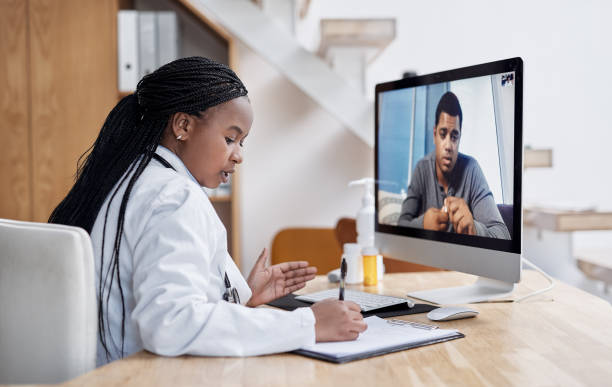Having chronic high blood pressure, or hypertension, can affect many aspects of your health. Hypertension is the leading cause of other serious health problems such as heart disease, heart attack, and stroke.1 Therefore, ongoing care is important for people with this condition.
This is where telehealth shines. With telehealth, you can access care for high blood pressure from the comfort of your home.
What is Telehealth?
Telehealth refers to remote medical appointments conducted using telecommunications technology like videoconferencing and phone calls. Keep in mind, there are still situations where you would need to see your healthcare provider in person.
Make sure you review with your providers and medical care team what aspects of your blood pressure care can be conducted through telehealth and when you need to visit your doctor’s office.
When to Use Telehealth for Treating Blood Pressure
A 2019 study examined the effectiveness of telehealth-based care for blood pressure management. Telehealth care at home combined with care management by public health nurses based in a center was found to be feasible and effective for improving blood pressure control among people with hypertension.3
A person’s blood pressure is measured with two numbers: systolic blood pressure, which is a reading of the pressure exerted in your arteries with each heartbeat, and diastolic blood pressure, a measure of the pressure in your arteries in the period of time when your heart rests in between beats.
Scenarios when telehealth may be your best option
- Reviewing your health history
- Conducting at-home blood pressure monitoring
- Being unable to travel to an in-person appointment
- Consulting your doctor about prescriptions
Benefits and Challenges
Even though telehealth is still relatively new, it can be particularly helpful in treating a range of conditions, including high blood pressure:
- Regular at-home monitoring
- Avoidance of “white coat hypertension"
- Easy access to providers
- Cost-effectiveness
However, not every insurance provider covers telehealth visits. Additionally, access to technology can create a major barrier to telehealth services. If a person doesn’t have a reliable Internet connection, technological devices, or health insurance, telehealth may be out of reach.
How to Prepare for a Telehealth Visit for Blood Pressure
Here are ways you can prepare for a telehealth visit for blood pressure:
- Be organized with your technology: You have to make sure your technology is in order. If you are scheduled for a videoconferencing appointment, make sure you have either a portable camera connected to your computer or that the camera in your device is working properly. Also, have any login information readily available and ensure that the software on your device or provider’s app are updated to the latest versions. Try to do a test beforehand to be sure everything is working properly.
- Connect with your insurance provider: Given that not every health insurance provider covers telehealth services, make sure this will be covered by your plan ahead of time, and if not, understand the costs associated with your telehealth appointment. Check out information about your specific health insurance plan online or call your insurance provider directly to speak with a representative who can answer your questions.
- Be prepared for the call: Ahead of your call, make sure you’re in a quiet room with no distractions. If you are using video, be sure you are in a well-lit room and double-check your WiFi connection prior to the meeting.
- Write down questions beforehand: It’s always important to come prepared with questions before any health appointment. If you have any questions or concerns about changes in your blood pressure, for instance, come prepared with a list of questions. If possible, try to do some research before the call. Be prepared if your provider asks you about your personal or family health history.
Will Insurance Cover Telehealth for Blood Pressure?
What Happens During a Visit?
Here is what you can expect from a telehealth visit for monitoring or diagnosing high blood pressure:
- Questions from your provider: Your healthcare provider will ask you a wide range of questions about your general health and past personal and family health history. Some questions they may ask include the following: Do you have a family history of hypertension? Do you have a family history of heart disease, heart attack, or stroke? Have you experienced a heart attack, heart disease symptoms, or a stroke in the past? Do you exercise regularly? What does your diet consist of? Do you have comorbid conditions like diabetes or obesity?4
- Scheduling of future appointments: Your provider may ask you to come in for an in-person physical exam. They may want you to come in to further monitor your blood pressure and check for other symptoms. Your provider may also set up regular remote telehealth appointments to check your progress and continue to monitor your blood pressure.
It will also benefit you to take notes during your appointment in a notebook, journal, or on your device for future reference.
Key Takeaways
Monitoring your blood pressure is important for assessing your overall health, especially if you have hypertension. It can help you and your provider keep an eye out for serious conditions like heart disease. Telehealth is a great way to do that.
However, telehealth appointments may just be one piece in your overall care for high blood pressure. You may still need to go to a medical office for in-person visits. Telehealth complements your overall care, giving you easy access to a wide range of specialists while also keeping your blood pressure and other health concerns in check.














